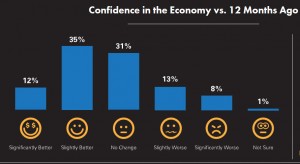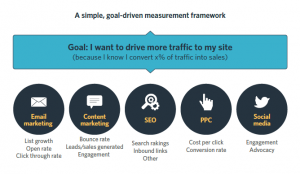Survey data collection might not seem like a revolutionary or groundbreaking business practice but in an economy that’s increasingly being driven by customer experience (CX) it’s one of the most important things an organization can do.
How else are you supposed to know what your customers think about your product or service?
And by think I mean more than just vague concepts like they love it, but more concrete and useful things like:
- What feature do they value most?
- What do they wish they could improve?
- Why do they buy from you rather than your competition?
Questions like these are important but even more important are the answers to them. And while someone within your organization can probably give out an answer to these questions, without backing these claims with data from real customers those answers might as well be guesses.
Think about how decisions are made in most companies. A couple of high ranking individuals come together and brainstorm ideas to overtake their competition with radically improved products and marketing. The one thing that’s usually lacking in these meetings is the customer’s view on what should happen.
And no matter how well you think you know your customers, being inside the organization makes you susceptible to the echo chamber effect, where everyone (including your competitors) only see things from the same perspective and very soon you and your customers are on completely different plains.
In fact, according to a Bain and Company study, most companies that think they’re providing their customers with great services aren’t.
This is the echo chamber at work and the result is that your customer suffers which means they take their business somewhere else. In fact, it’s estimated that poor customer experience is costing U.S. companies $ 136.8 billion per year due to avoidable churn.
The good news is that most companies are starting to realize the importance of putting the customer at the center. And in two years time, 81% of marketers say their organizations will compete mostly or completely on the basis of customer experience.
Why survey data collection should be a company priority
The only way to improve customer experience in your organization is to give your customers a voice within the organization.
The feedback from customer surveys provides you with that voice. It replaces guesswork and all the noise in the echo chamber with data that can be linked to actual customers.
When most people think of customer experience, they primarily think of customer support, but customer experience done right has far-reaching implications throughout the organization.
Here are a couple of ways collecting survey data can help different departments:
Customer support: For your support team, the benefits of customer feedback is more direct. The data collected from surveys can highlight touchpoints that customers have the most trouble with and identify dissatisfied customers so that they can be assisted before they churn.
Product: Survey data also helps your product team create improved product roadmaps since feature requests are now based on customer expectations rather than educated guesses.
Marketing: The data you collect from customer surveys can provide insights that can help marketing refine their messaging to your target audience which can lead to lower customer acquisition costs and higher conversion rates across different channels.
Sales: Customer feedback can also shed light on your customer segments equipping your salespeople with a deeper understanding of what each value most.
Executives: The impact of collecting survey data even reaches all the way up to the executive level where data like your company’s NPS ratings can act as a way to predict future growth as well serve as a benchmark by which company actions are measured against.
How to collect survey data
When it comes to collecting survey data there are a few things to keep in mind to ensure you get the most accurate and useful feedback possible:
- Use the right survey type: Surveys are like tools in a box, you have to pick the right one for each use case to get optimal results. For example, a CSAT survey is used to measure a customer’s satisfaction with a specific interaction or event and is a short term satisfaction metric, while the NPS survey is used to measure long-term customer satisfaction and loyalty. The right option is the survey type that works for your particular use case.
- Keep it simple: Whichever survey type you end up using, you need to aim for simplicity. You can usually do this by keeping your surveys short, which improves your completion rates and using simple language, optimally at an 8th-grade reading level.
- Know what distribution channel works for you: Also important is to how you’d like to distribute your surveys. While email and website surveys are usually the go-to options in survey distribution, don’t be afraid to try other methods like in-person interviews and calls to get feedback if that works better for your customers.
- Ask for feedback at the right time: Time, in this case, refers to the stage of the buyer journey the customer is at. Did they just make a purchase or sign up? Did they refer someone or cross a major milestone? Survey feedback taken at important customer touchpoints are more valuable than those taken at random since they add context to your data.
- Take action: Customer feedback is useless if it’s not put to good use and customers stop giving feedback when their inputs aren’t acknowledged and resolved. Since customer experience touches on all areas of an organization, taking action means C-suite has to be fully onboard. To make sure feedback collected doesn’t slip through the cracks, in a large organization a customer experience management team should be set up and must consist of stakeholders from various departments to make sure customer feedback gets implemented.
While in smaller companies a single team member, usually someone in customer support can ensure that valuable feedback reaches those in a position to take action.
Conclusion on survey data collection
The greatest thing about collecting survey data and putting it into action is that it has this advantageous compounding effect.
Acting on customer feedback improves customer experience, which leads to an increase in customer retention and referrals, which in turn leads to a revenue increase.
Increased revenue means you can hire more staff, build a better product, provide greater support, acquire more customers and the circle continues.
Business & Finance Articles on Business 2 Community
(22)






